Rear end first! The XP-55 "Ascender", Curtiss daring flying wing project!
There are types of aircraft whose construction deviates so much from the usual that one hardly wants to believe in their ability to fly. The XP-55 "Ascender" undoubtedly belongs to this spectrum, whereby the "X" in its name already refers to its experimental nature. The fact that the XP-55 has at least been given a popular name, however, also indicates the high hopes that were associated with this novel design. After four years of intensive development, three built test planes, 3.5 million US dollars costs and two deaths, one finally had to admit that the XP-55 would probably never become an "Ascender".
The Ascender goes back to a USAAF call for competition in November 1939, in which three submitted projects were finally selected for further development: Vultee with the elegant double hull XP-54, Northrop with the XP-56 "Bullet", whose appearance lived up to its name, and Curtiss with the XP-55.
The fact that this Curtiss design was not a duck-wing construction- defined by a fixed front surface with a small movable rudder- only becomes clear at second glance. The pilot was able to use the trim tabs to put the small surfaces at the bow into the airstream during take-off to lift the bow. In flight, however, they moved freely in the airflow.
The XP-55 was therefore a flying wing aircraft; stability around the transverse axis was achieved by the striking sweep of the wings.
The flight characteristics were impressive, but not outstanding; however, an aerodynamic malfunction that was to lead to hair-raising accidents and ultimately to the loss of human life could be cause for concern: the XP-55 had the unpleasant characteristic of entering a flat spin without any warning and immediately losing a lot of height. Tests showed that it could not be stopped from this suddenly occurring flight condition before losing 1000 meters of altitude.
Curtiss test pilot Harvey Gray only narrowly escaped death when, after a long struggle, he managed to get out of the first prototype, which was spinning on its back. In May 1945, the third prototype was lost during a flight demonstration for the same reason, killing a bystander and the pilot.
In order to deal with this peculiarity, which was unacceptable for a production aircraft, the outer wings were supplemented by the prominent extensions found outside the vertical stabilizers.
Unfortunately this measure also only resulted in an improvement, but no solution to the problem.
Finally, an innovation was conceived which is widely used in today's flying: for the XP-55 the first "stick shaker" was designed and installed as a mechanical stall warning when approaching critical speed marks.
These stall characteristics, in combination with other difficulties that accompanied the project, such as a too long take-off distance, a constantly overheating Allison V-1710-95 engine and, last but not least, flight performances that always fell short of high expectations, led to the discontinuation of all further testing in late 1944.
The second test machine was preserved and can still be seen today in the Smithsonian Air and Space Museum in Washington. My model shows this machine.
It was created from the new kit of Modelsvit, who is responsible for the first time being able to build this rare but shapely machine as a low-threshold "mainstream kit".
In this project, which was the second time I encountered a Modelsvit product, I liked the good equipment: a clearly arranged but sensibly equipped etched parts panel, easily usable masking foils and beautifully made plastic parts that fit perfectly.
So, what more do you need! Maybe a construction plan that really helps and does not confuse? Or two transparent canopy parts, one open, the other closed? A rich decal sheet that is really useful? You will find that in a sturdy cardboard box, too. By the way, the decals are printed on an admirably delicate carrier film, which nevertheless remains well workable.
A shadow on all this praise is cast by the bad fit of the canopy, though. Trusting in the perfect fit of the parts so far, I waited until the end of the assembly without trying them on first. Well, you can see the result on the photos.
After regaining composure and with a little putty, I was able to get this out of the way in a short time - even though there are still some scratches on the model and on my own modelling vanity, which tell of my own great carelessness.
One conclusion remains clear for me: this is a really well-equipped and well-done kit of a "rare bird", which I would like to present to all interested people
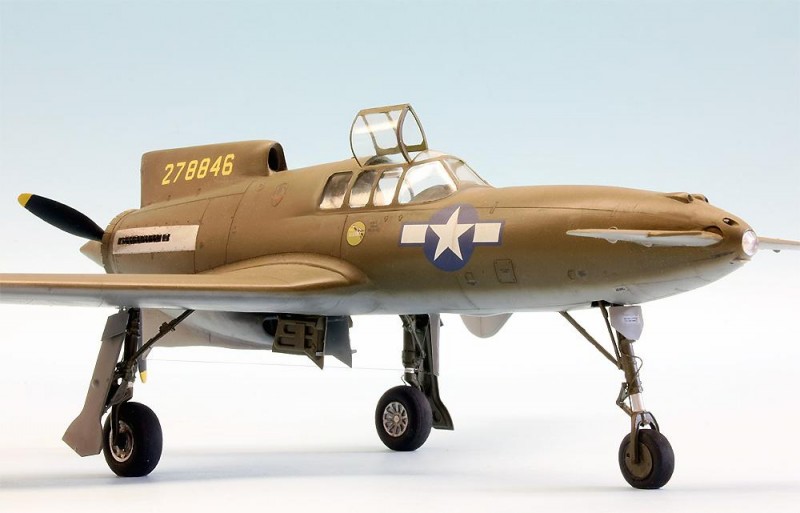

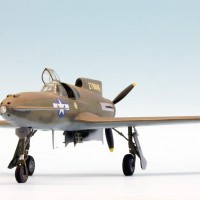
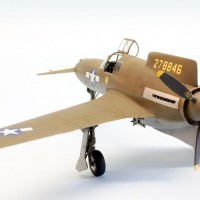
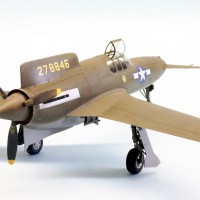
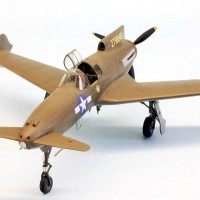
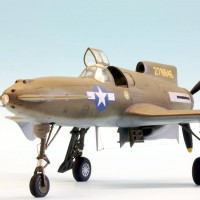
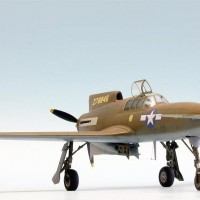


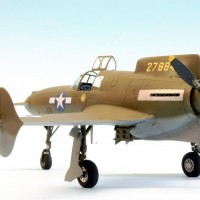

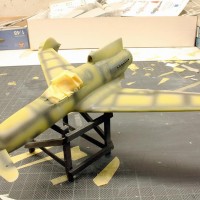
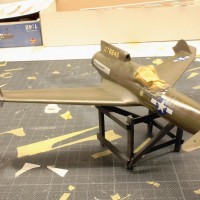
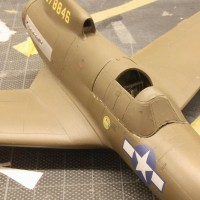
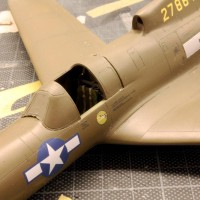
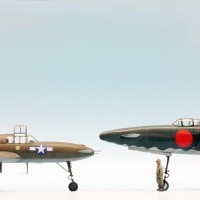
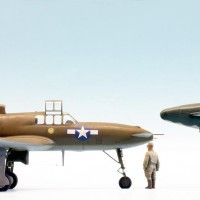


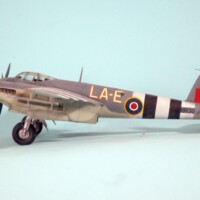
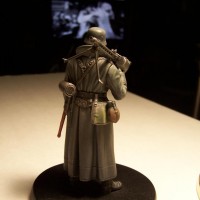
Simply COOL! I have seen pictures of this plane and have always thought it was super cool. I even "flew" one in my Microsoft flight simulator. You did a great job, and I appreciate the in progress shots, it gives an idea about the quality of the kit. It looks to be a very nice kit despite the ill fitting canopy glazing. I can see my self trading of one of my stash to get that kit. Thanks for a great post and some inspiration for something new.
That is one cool build! Thank you for the thorough description and great photos. Well done!
Great job on this Roland! I've one in the to build pile and hope to get to it soon.
That's an excellent model, Roland! Your built really represents this rare and peculiar bird in a most realistic way. What a cool machine and what an interesting story it carries with her. Thanks for sharing!
All the best, my friend and stay safe!
Wonderful looking Ascender Roland. Looks like this kit has lots of nice detail in it especially the cockpit.
Nice job Roland and I really like it. I have one of them in my stash and it is very nicely detailed. Your build inspires me and will help avoid so issue when I build it.
One thing that I wonder about is the quilting on the cockpits sides. Based on what I have seen in other planes when I build mine I will paint it khaki or OD as I assume it was made of cloth.
First build of this I have seen and I am impressed
There's another one here. Look on my blog.
Oops, I might just have forgotten that post. Sorry Tom.
Surely this is a very elaborate April Fool joke?
?
https://en.wikipedia.org/wiki/Curtiss-Wright_XP-55_Ascender
Very nice work! I especially like the "two shots" with J7W1 Shin-den, which is also a good job.
One unusual bird, looks great!
Your feedback is really so pleasing!
No, definitely not April Fool's Day - but the release date would have been good indeed 🙂
Tom, I see in your blog, you are also a friend of Modelsvit! My latest prey is their early Bf 109D, it's on the workbench right now.
Thanks for your motivating words and your interest.
Looks great! I have this in 1/72 and want to build it soon - such an unusual aircraft. Love the pics with the Shinden
Roland, Very nice looking, Nice touch with the detail on the landing gear and in the cockpit, it gives a nice realistic look. Well done !
Thank you Greg and Terry!